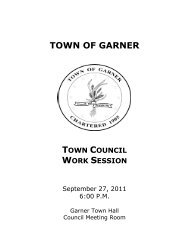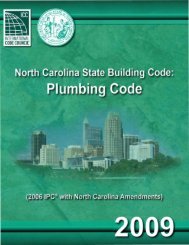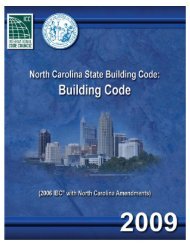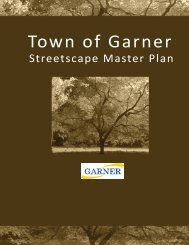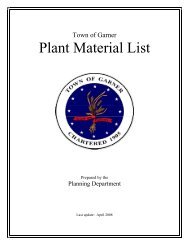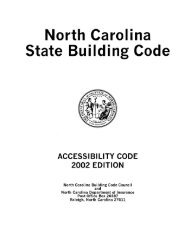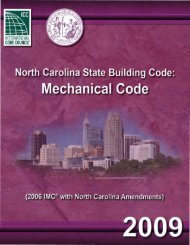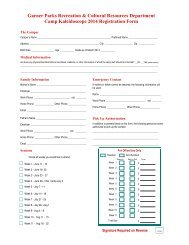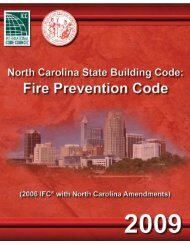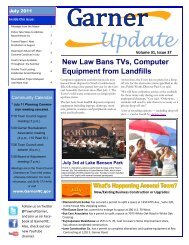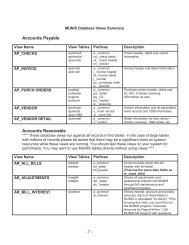Transportation Plan - Town of Garner
Transportation Plan - Town of Garner
Transportation Plan - Town of Garner
Create successful ePaper yourself
Turn your PDF publications into a flip-book with our unique Google optimized e-Paper software.
INTERSECTIONS<br />
PURPOSES<br />
Intersections have to strike a balance between vehicular traffic throughput (intersection delays are the major<br />
source <strong>of</strong> delay in urbanized areas) with the need to promote safe walking and bicycling. The following are best<br />
practice targets for <strong>Garner</strong>’s intersections for Local/Collector and Boulevard/Thoroughfare typologies. Note that<br />
the turning radii expand with the speed <strong>of</strong> the intersecting facility, as do the requirements for managing driveway<br />
access points.<br />
CHALLENGES<br />
• Maintaining adherence to state and national standards for vehicular throughput that may not be sensitive to<br />
the surrounding land uses<br />
• Accomplishing multiple objectives to accommodate cars, bicycles, pedestrians and transit vehicles (on transit<br />
routes) safely and effectively<br />
PARTS OF AN INTERSECTION. Strong crosswalk treatments (A)<br />
help to ensure pedestrian safety and ADA compliance that<br />
otherwise could cost the <strong>Town</strong> heavily; (B) wayfinding signage at<br />
congested locations can help reinforce a welcoming and open<br />
public atmosphere that is proven to increase foot traffic and<br />
decrease crime; (C) and (D) are amenities like water fountains,<br />
trash receptacles, and seating areas that increase the utility and<br />
vitality <strong>of</strong> the street; and (E) indicates curb extensions or “bulb<br />
outs” that reduce the pedestrian crossing distance and force<br />
traffic to slow to make turns.<br />
The bottom graphic indicates the various zones <strong>of</strong> a street: the<br />
door zone that, on a residential street includes front and side<br />
yard setbacks; an amenity zone that may include everything from<br />
mailboxes to front porches; a streetscaping zone with planted<br />
materials that can serve as a stormwater retention area to<br />
improve the quality <strong>of</strong> drinking water (see Green Streets section);<br />
and street interface area, where pedestrians, cyclists, and<br />
automobile drivers must interact. Design elements on both sides<br />
<strong>of</strong> the curbline can greatly influence how that interaction occurs.<br />
Appendix E: Design Guidance Page | 180




